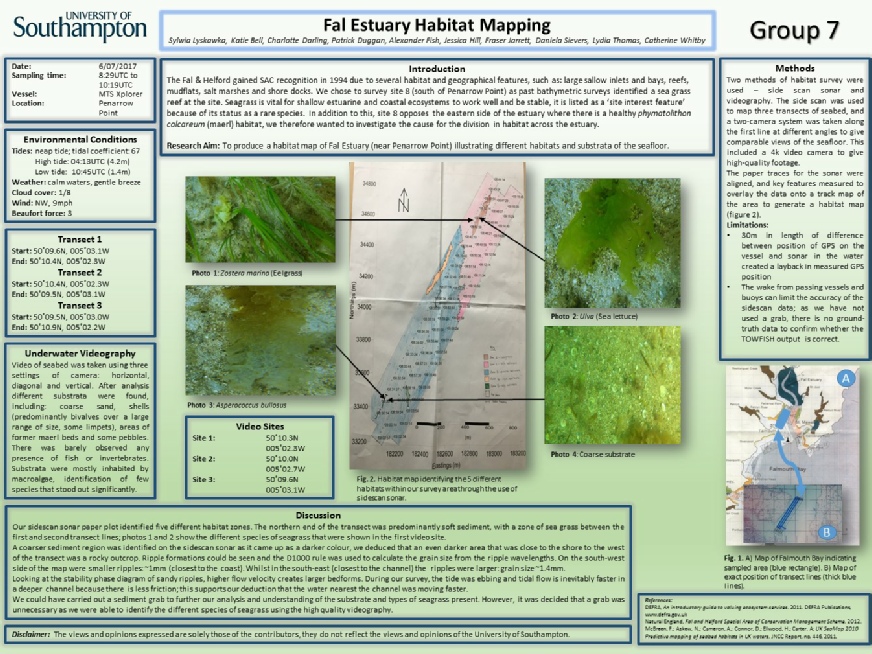 Top of Page
Top of Page
 Top of Page
Return Home
See our References
Top of Page
Return Home
See our References
 Top of Page
Top of Page




|
Transect Line |
Start |
End |
|
1 |
50o 09.6N 005o 03.1W 08:29 UTC |
50o 10.4N 005o 02.3W 08:44 UTC |
|
2 |
50o 10.4N 005o 02.3W 08:47 UTC |
50o 09.5N 005o 03.1W 09:01 UTC |
|
3 |
50o 09.5N 005o 03.0W 09:02 UTC |
50o 10.9N 005o 02.2W 09:17UTC |
|
Date |
06/07/17 |
|
High water UTC |
03:13 15:37 |
|
Low water UTC |
09:45 22:08 |
|
Time out of dock UTC |
07:15 |
|
Time return to dock UTC |
11:00 |
|
Weather |
1/8 cloud cover, 9mph wind, NW direction Calm water |


| Introduction |
| Chemistry |
| Physics |
| Biology |
| Introduction |
| Physics |
| Biology |
| Chemistry |
| Introduction |
| Poster |
| Video Clips |